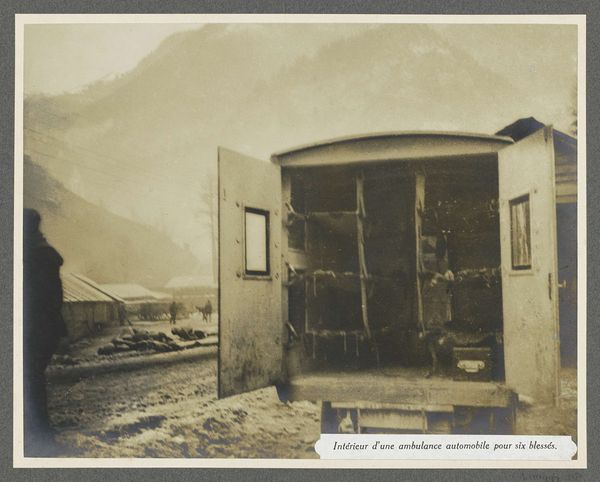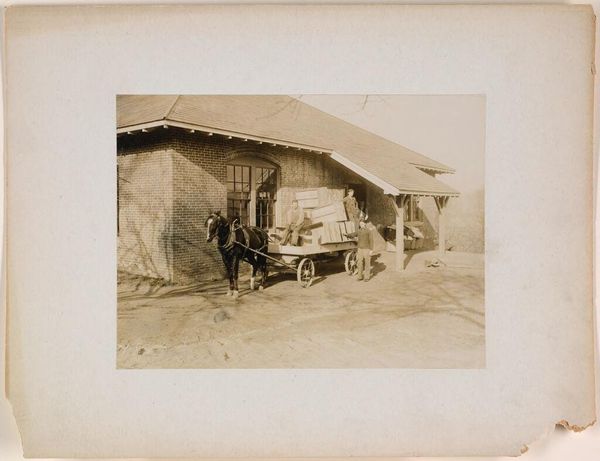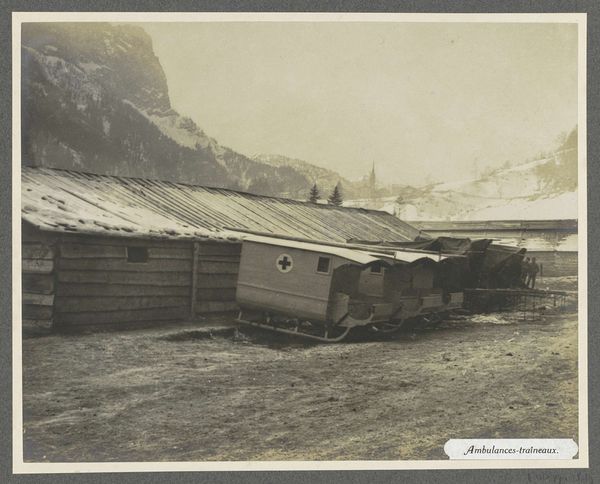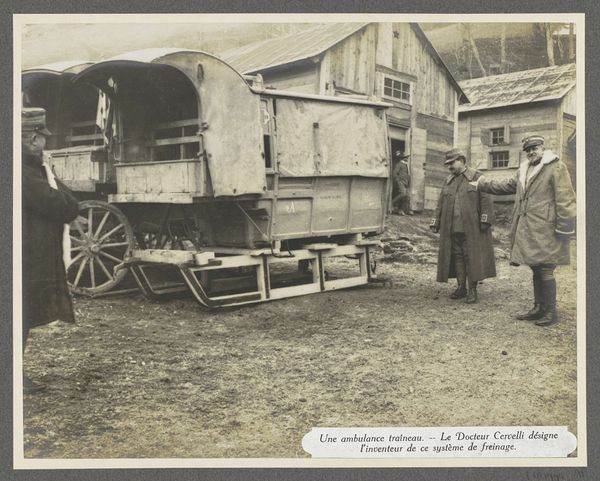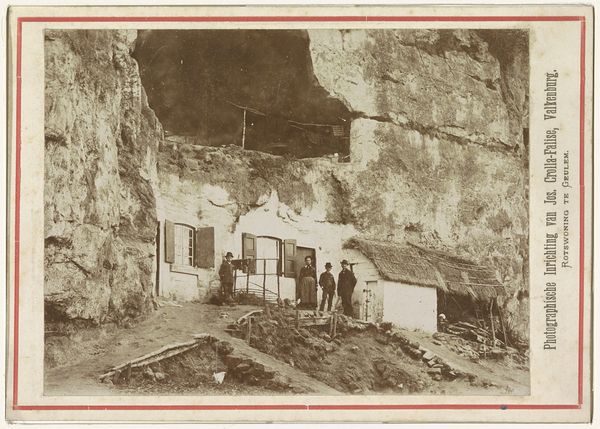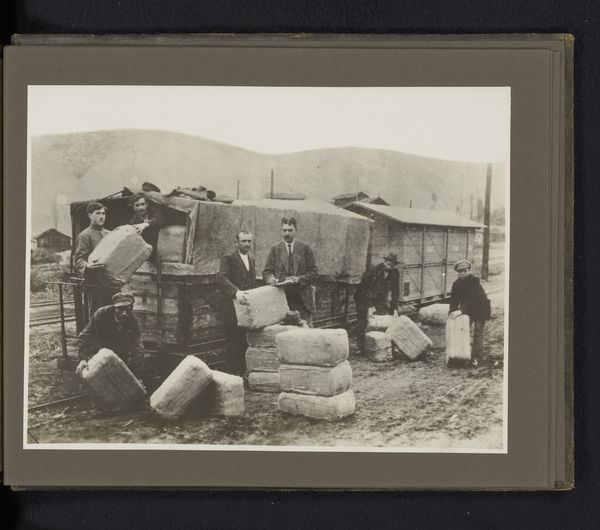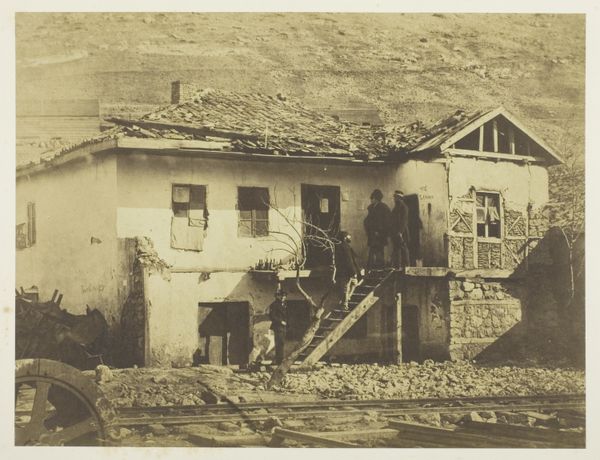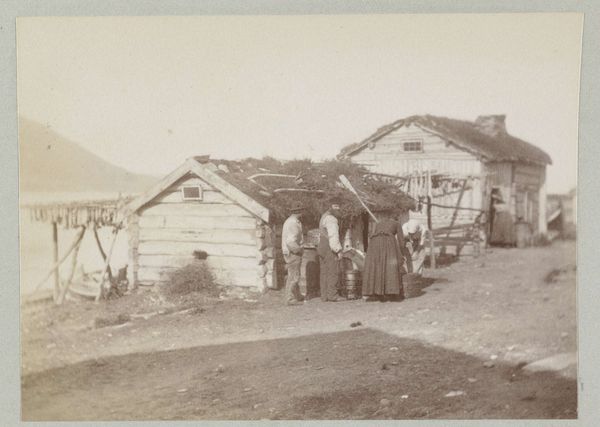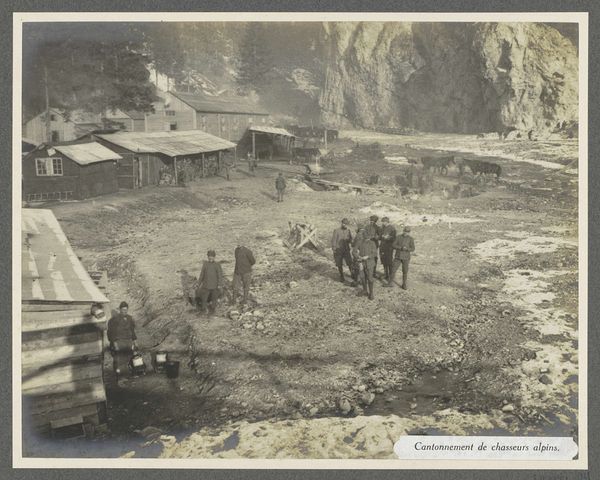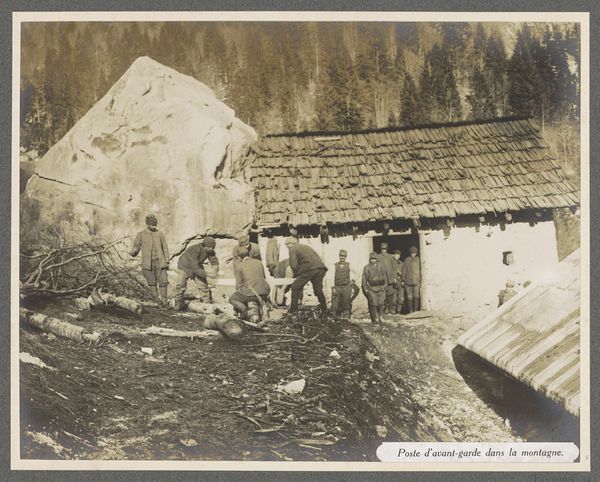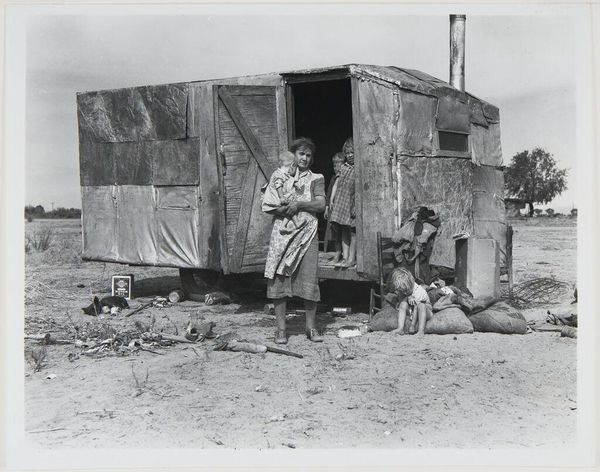
Militairen sjouwen brancards aan de achterzijde van twee ambulances, vermoedelijk Italianen 1916
0:00
0:00
photography, gelatin-silver-print
#
landscape
#
photography
#
gelatin-silver-print
#
realism
Dimensions: height 218 mm, width 280 mm
Copyright: Rijks Museum: Open Domain
Editor: This gelatin silver print, “Militairen sjouwen brancards aan de achterzijde van twee ambulances, vermoedelijk Italianen," by Henri de Rothschild, was taken in 1916. The mood is so somber, even with the bright mountain background. What's your take on what this image is communicating? Curator: Well, it depicts a moment amidst the chaos of World War I. We see ambulances, presumably near the Italian front given the title. However, consider the historical context: photography during wartime wasn't just documentation; it was carefully managed propaganda. Do you notice anything striking about what’s being shown, and more importantly, what’s omitted? Editor: Now that you mention it, there's a distinct lack of…trauma. We see the logistics of care, the vehicles, but not the injured themselves. Curator: Exactly. Where is the explicit horror of war? It suggests a sanitized view. Photography, though seemingly objective, played a crucial role in shaping public perception. How do you think this image contributed to the broader narrative of the war? Editor: It probably softened the harsh realities. By focusing on the orderliness of the ambulances, it implies control and minimizes the perception of loss and suffering. Curator: Precisely. It normalizes war through bureaucracy and a removal of the visceral cost. We see the back end of the medical process; the raw aftermath is carefully screened out. The framing itself becomes a political act. Editor: I hadn’t considered how much the *absence* of something could communicate. It's a subtle manipulation, framing a moment but withholding the pain. Curator: Indeed. It makes me think about the role institutions played during wartime and beyond. Every picture tells a story but leaves out even more. Thank you for giving me new things to consider here. Editor: Definitely. It shows how understanding historical context lets you decode the deeper meanings in photographs, and art generally.
Comments
No comments
Be the first to comment and join the conversation on the ultimate creative platform.
